Alexandra George - Python Text Mining: Perform Text Processing, Word Embedding, Text Classification and Machine Translation (English Edition)
Here you can read online Alexandra George - Python Text Mining: Perform Text Processing, Word Embedding, Text Classification and Machine Translation (English Edition) full text of the book (entire story) in english for free. Download pdf and epub, get meaning, cover and reviews about this ebook. year: 2022, publisher: BPB Publications, genre: Home and family. Description of the work, (preface) as well as reviews are available. Best literature library LitArk.com created for fans of good reading and offers a wide selection of genres:
Romance novel
Science fiction
Adventure
Detective
Science
History
Home and family
Prose
Art
Politics
Computer
Non-fiction
Religion
Business
Children
Humor
Choose a favorite category and find really read worthwhile books. Enjoy immersion in the world of imagination, feel the emotions of the characters or learn something new for yourself, make an fascinating discovery.
- Book:Python Text Mining: Perform Text Processing, Word Embedding, Text Classification and Machine Translation (English Edition)
- Author:
- Publisher:BPB Publications
- Genre:
- Year:2022
- Rating:3 / 5
- Favourites:Add to favourites
- Your mark:
Python Text Mining: Perform Text Processing, Word Embedding, Text Classification and Machine Translation (English Edition): summary, description and annotation
We offer to read an annotation, description, summary or preface (depends on what the author of the book "Python Text Mining: Perform Text Processing, Word Embedding, Text Classification and Machine Translation (English Edition)" wrote himself). If you haven't found the necessary information about the book — write in the comments, we will try to find it.
Make use of the most advanced machine learning techniques to perform NLP and feature extraction
Key Features
Learn about pre-trained models, deep learning, and transfer learning for NLP applications.
All-in-one knowledge guide for feature engineering, NLP models, and pre-processing techniques.
Includes use cases, enterprise deployments, and a range of Python based demonstrations.
Description
Natural Language Processing (NLP) has proven to be useful in a wide range of applications. Because of this, extracting information from text data sets requires attention to methods, techniques, and approaches.
Python Text Mining includes a number of application cases, demonstrations, and approaches that will help you deepen your understanding of feature extraction from data sets. You will get an understanding of good information retrieval, a critical step in accomplishing many machine learning tasks. We will learn to classify text into discrete segments solely on the basis of model properties, not on the basis of user-supplied criteria. The book will walk you through many methodologies, such as classification, that will enable you to rapidly construct recommendation engines, subject segmentation, and sentiment analysis applications. Toward the end, we will also look at machine translation and transfer learning.
By the end of this book, youll know exactly how to gather web-based text, process it, and then apply it to the development of NLP applications.
What you will learn
Practice how to process raw data and transform it into a usable format.
Best techniques to convert text to vectors and then transform into word embeddings.
Unleash ML and DL techniques to perform sentiment analysis.
Build modern recommendation engines using classification techniques.
Who this book is for
This book is a good place to start with examples, explanations, and exercises for anyone interested in learning more about advanced text mining and natural language processing techniques. It is suggested but not required that you have some prior programming experience.
Table of Contents
1. Basic Text Processing Techniques
2. Text to Numbers
3. Word Embeddings
4. Topic Modeling
5. Unsupervised Sentiment Classification
6. Text Classification Using ML
7. Text Classification Using Deep learning
8. Recommendation engine
9. Transfer Learning
Alexandra George: author's other books
Who wrote Python Text Mining: Perform Text Processing, Word Embedding, Text Classification and Machine Translation (English Edition)? Find out the surname, the name of the author of the book and a list of all author's works by series.

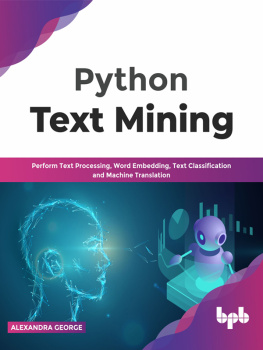
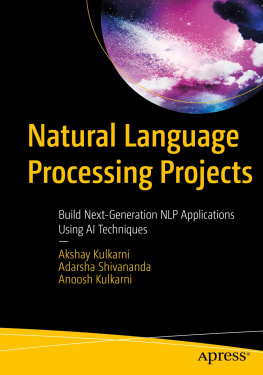
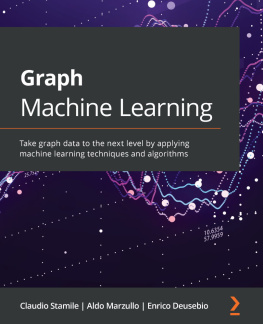
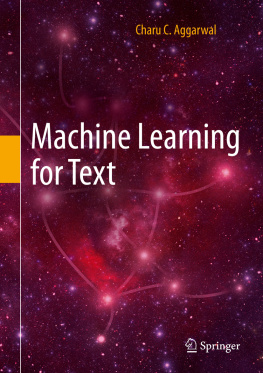
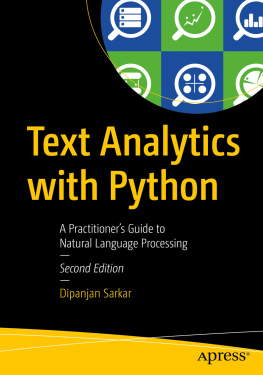
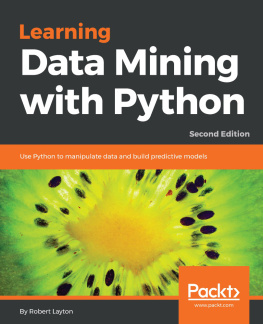

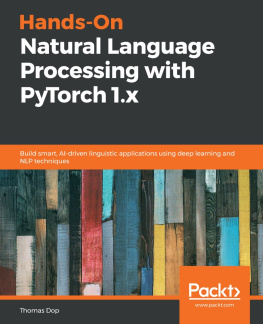
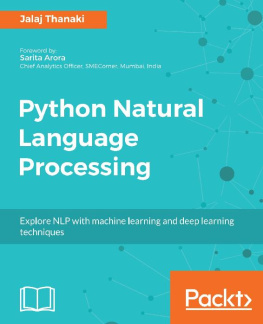
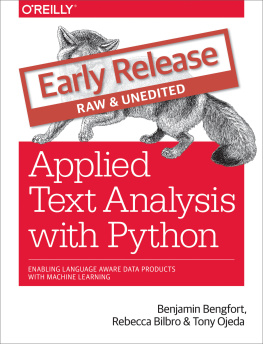
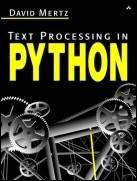


 www.bpbonline.com FIRST EDITION 2022Copyright BPB Publications, IndiaISBN: 978-93-89898-781 All Rights Reserved. No part of this publication may be reproduced, distributed or transmitted in any form or by any means or stored in a database or retrieval system, without the prior written permission of the publisher with the exception to the program listings which may be entered, stored and executed in a computer system, but they can not be reproduced by the means of publication, photocopy, recording, or by any electronic and mechanical means. LIMITS OF LIABILITY AND DISCLAIMER OF WARRANTY The information contained in this book is true to correct and the best of authors and publishers knowledge. The author has made every effort to ensure the accuracy of these publications, but publisher cannot be held responsible for any loss or damage arising from any information in this book. All trademarks referred to in the book are acknowledged as properties of their respective owners but BPB Publications cannot guarantee the accuracy of this information.
www.bpbonline.com FIRST EDITION 2022Copyright BPB Publications, IndiaISBN: 978-93-89898-781 All Rights Reserved. No part of this publication may be reproduced, distributed or transmitted in any form or by any means or stored in a database or retrieval system, without the prior written permission of the publisher with the exception to the program listings which may be entered, stored and executed in a computer system, but they can not be reproduced by the means of publication, photocopy, recording, or by any electronic and mechanical means. LIMITS OF LIABILITY AND DISCLAIMER OF WARRANTY The information contained in this book is true to correct and the best of authors and publishers knowledge. The author has made every effort to ensure the accuracy of these publications, but publisher cannot be held responsible for any loss or damage arising from any information in this book. All trademarks referred to in the book are acknowledged as properties of their respective owners but BPB Publications cannot guarantee the accuracy of this information.  www.bpbonline.com
www.bpbonline.com